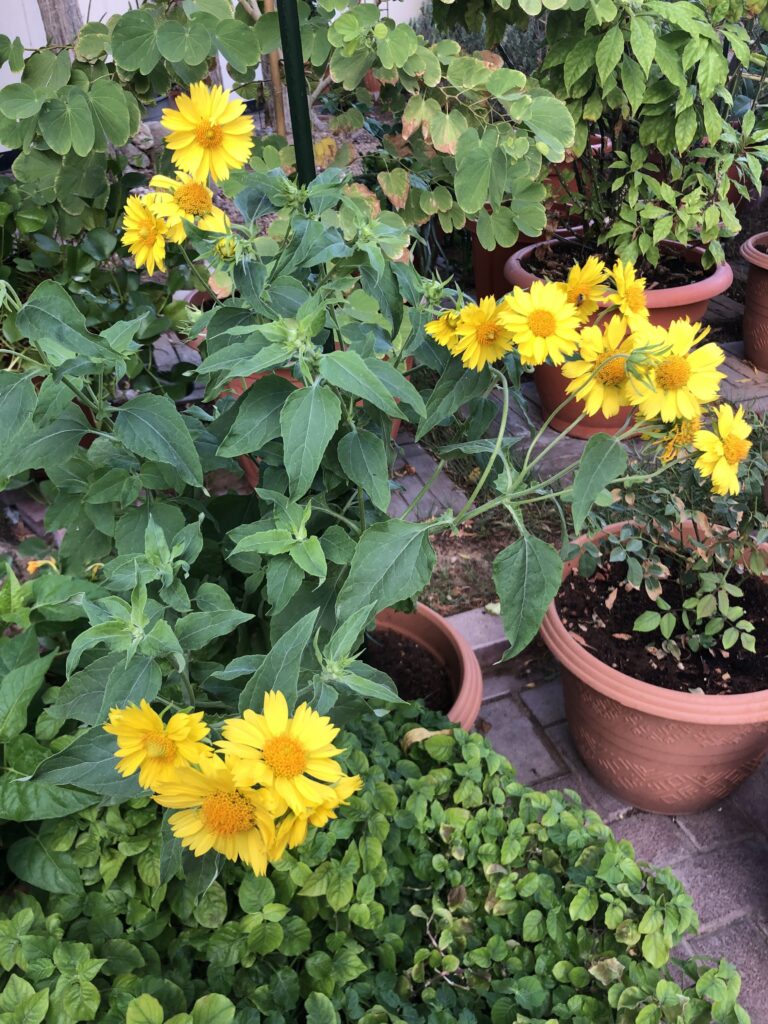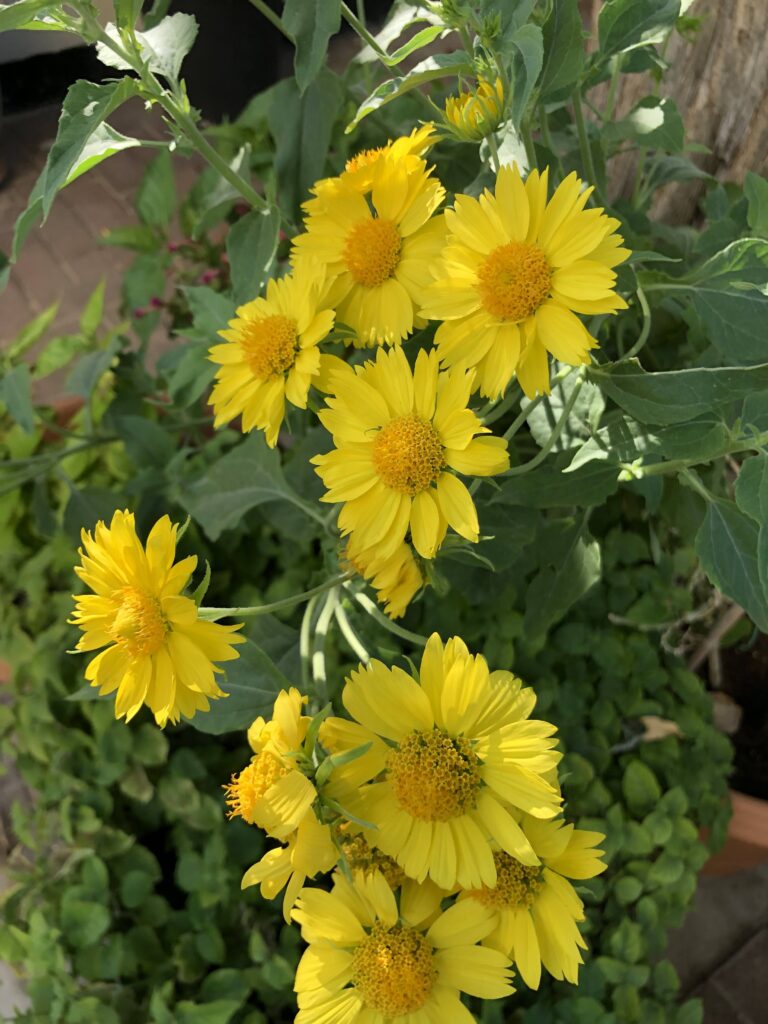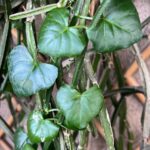Golden Crownbeard is Verbesina Enceliodes, a member of the Asteraceae family. It is also known as wild sunflower, South African Daisy, and Cowpen flower. Native to South America and Mexico, it is considered a weed in the United States but has many medicinal uses in the hands of an experienced herbal practitioner. It is also the larval host of the Golden patch butterfly, so useful there.
I love the plant for its prolific, bright yellow flowers which bring a smile to my face every morning at the beginning of the season. The bees love them, particularly as they begin to bloom before our other flowers start. Except for the hottest month of August and some weeks in September, this plant pretty much blooms every day.
It does not like too much rain and likes to have well-drained aerated soil which does make it quite ideal for the climate in the GULF. However, I would not call it drought tolerant as it needs regular watering. Basically, it does not need much care, but I would suggest deadheading regularly as that really improves the health of the plant. Also, do aerate the soil well and regularly as it does better in disturbed soil.

Some of its medicinal uses are –
As a medicine, it is an anti-inflammatory due to the presence of azulene blue in the flowers. It has also been used as a tea for arthritic discomfort, to reduce fever and increase sweating, and to reduce inflammation of the mouth and gums. Topically it has been used as compresses, soaks, and salves for inflammation, such as hemorrhoids, postpartum inflammation, and skin ulcers. Among the Diné (Navajo), it is called ildi ylinlcini and is reportedly used for intestinal gas, cramping, and protection from lightning.
Ironically, this useful plant is also one of our most potent allergens. and when it blooms, many people react with sneezing and congestion. Añil del muerto as the Spanish conquerors called it has also poisoned livestock due to the presence of the alkaloid galegine.
Interestingly, it was research into the alkaloid galegine in the early 1920s for its use in treating malaria that resulted in the development of the drug Metformin for diabetes. The plant is not recommended as a remedy for diabetes due to the presence of galegine and its potential toxicity. Additionally, if used internally at all as in the traditional Diné traditions, it should not be used daily due to the presence of galegine.







Recent Comments